| |
|
|
|
|
|
|
|
|
|
|
| |
| |
 |
|
| |
田润德
编译
文/图 2020-04-06 16:36 |
|
| |
|
|
|
|
| |
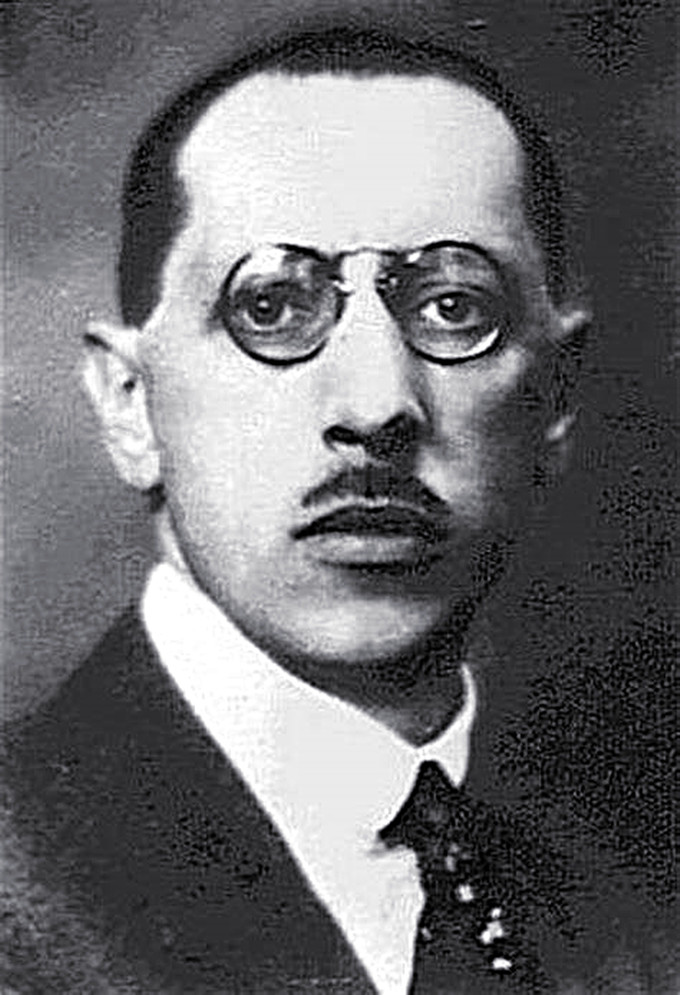 |
|
|
|
| |
伊戈尔·斯特拉文斯基(Igor Stravinsky,1882-1971) |
|
|
|
| |
|
|
|
|
| |
斯特拉文斯基《春之祭》(1947年修订版) 西蒙·拉特 2016~2017
|
|
|
|
| |
柏林爱乐乐团(BPO)2016~2017乐季(2017.06)在德国柏林柏林爱乐大厅的现场版,由现任柏林爱乐首席指挥 西蒙·拉特
爵士指挥,曲目是 斯特拉文斯基 春之祭(1947年修订版)。 |
|
|
|
| |
|
|
|
|
| |
音乐历史上的今天
1971年4月6日,伊戈尔·斯特拉文斯基于清晨5点20分在纽约寓所去世。
伊戈尔·斯特拉文斯基(Igor
Stravinsky,1882-1971)是美籍俄裔作曲家、指挥家和钢琴家,20世纪最负盛名的音乐人物。1882年6月17日,他出生在彼得堡附近的盖拉宁鲍姆一个音乐气息浓厚的家庭。他的父亲是位男低音歌手,母亲也颇具音乐修养。斯特拉文斯基从小耳濡目染,表现出对音乐的极大兴趣,他9岁起学习钢琴演奏,10岁起就在钢琴上练习作曲。然而,他的父母、特别是粗暴的母亲却置他的个人爱好于不顾,让他学习法律,将来好谋取官职。可斯特拉文斯基的成绩总是不理想,因为他的全部心思都在音乐上。经过刻苦自学,他初步掌握了和声、对位。后来,他又师从“强力集团”的著名作曲家里姆斯基一柯萨科夫,学习配器,得到很大的收获。
1905年,斯特拉文斯基在大学生涯结束后,与他的表姐卡特琳娜定婚,并于次年在圣彼得堡郊外的一个村子里举行婚礼。也就是在这一时期,他开始了音乐创作。
1909年他的管弦乐ny幻想曲《烟火》在彼得堡演出时,他得到俄罗斯舞剧团经理兼舞剧编导季亚吉列夫的赏识,此后,他们多年合作,创作并演出舞剧。
1940年9月,斯特拉文斯基在马萨诸塞州第二次结婚,妻子是芭蕾舞女薇拉·德·波塞特。他们婚后在好莱坞定居,斯特拉文斯基于1945年加入美国籍。在1958年后的
10年中,他做了遍及全世界的旅行。于1962年9月又来到了阔别近半个世纪的苏联。他在莫斯科和列宁格勒举行了一系列音乐会,赏到了英雄般的欢迎。离苏前,在克里姆林宫他还受到赫鲁晓夫的接见。
1967年,斯特拉文斯基的健康开始衰退,1969年,他从好莱坞迁居纽约,次年又到欧洲疗养。1971年4月6日,斯特拉文斯基在纽约逝世。根据作曲家遗孀的建议,他的遗体安葬于威尼斯圣米克尔岛上季亚吉列夫墓的附近。
大约在1910年至1914年间,斯特拉文斯基全家多次去瑞士。他在那里疗养,并为演出事宜出入于巴黎。第一次世界大战爆发后,瑞士成了斯特拉文斯基的居留地。由于他的音乐的大部分出版商是俄国人,而且他再也不能从俄国的庄园中获得收益,因此生活相当拮据。后来由于英国指挥家托马斯·比彻姆慷慨解囊,他才得以摆脱困境.1930年夏,斯特拉文斯基离开瑞士,迁居布列塔尼,后又于1
9
34年加入了法国籍。在法国,他为巩固自己艺术家地位的努力并不是十分成功,于是,他产生了去美国的想法。他多次赴美旅行,并指挥了许多美国乐队。1938年至1939年,斯特拉文斯基的女儿、妻子和母亲相继病逝,他自己也因病疗养了一段时间。1939年9月世界大战爆发,刚恢复健康的斯特拉文斯基便迁居美国,并在马萨诸塞州剑桥讲学,内容为“音乐的诗意”,该讲稿于1942年由哈佛大学出版社出版。
斯特拉文斯基的音乐创作,大致可以分为3个时期,即:俄罗斯风格时期(1905-1919);新古典主义时期(1920-1951);序列音乐时期(1952-1971)。
斯特拉文斯基的早期音乐,大都是囿于传统风格、具有俄罗斯民族主义精神的作品。这一时期的斯特拉文斯基都不失为一个淳朴的、具有俄罗斯精神的作曲家,只是他对异乎寻常的乐器色彩、对狂热的节奏、对严酷的力量与热情已逐渐地表现出他所特有的偏爱。在斯特拉文斯基的中期创作中,他断绝了同俄罗斯往昔的联系,同时也放弃了他以前的那种淳朴的和革新的倾向。他转入了新古典主义时期,在创作中比较偏爱交响曲、奏鸣曲、组曲、协奏曲、大协奏曲、弥撒曲等古典主义的结构,音乐也变得异常清澈、简洁、单纯、经济而明确,时而还从前辈作曲家那儿借用素材。他对复调音乐与节奏的兴趣加深了,并有效地运用在他的合唱音乐中。
斯特拉文斯基在1952年访问巴黎时,曾经抨击十二音体系,然而,恰恰是在这一年中,他从自己的新古典主义音乐中解脱了出来,调性开始在他的音乐中消亡。
斯特拉文斯基的早期作品是普遍为人喜爱的。他的《火乌》、《彼特鲁卡》、《春之祭》,无论在音乐会上,还是在芭蕾舞台上,都是太受欢迎的曲目;新古典主义时期也不乏佳作,而中后期的作品,尤其是采用序列音乐手法创作的音乐,虽然已为人们所接受,但不为广大听众喜爱,目前已很少演出。
今日视频:1、西蒙·拉特尔指挥柏林爱乐演奏斯特拉文斯基《春之祭》
;2、
金道贤(Do-Hyun Kim)演奏斯特拉文斯基《彼得鲁什卡》第三乐章;3、安德烈·柯萨科夫演奏斯特拉文斯基小提琴协奏曲。 |
|
|
|
| |
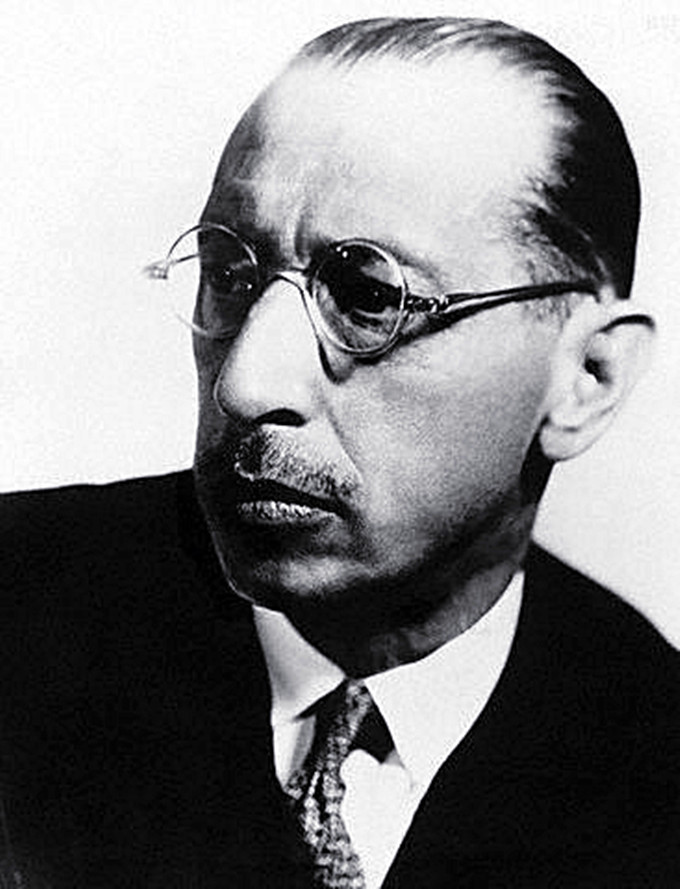 |
|
| |
伊戈尔·斯特拉文斯基(Igor Stravinsky) |
|
|
|
| |
Today in the
history of music
On April 6, 1971, igor stravinsky died at 5:20 a.m. in his New York
apartment.
Igor Stravinsky (1882-1971) was a Russian American composer, conductor,
and pianist.He was born on June 17, 1882, in galaninbaum, near
Petersburg, to a musical family.His father was a bass singer and his
mother was very musical.Stravinsky showed a keen interest in music,
learning to play the piano from the age of nine and practicing
composition on the piano from the age of ten.However, his parents,
especially his surly mother, ignored his personal interests and allowed
him to study law so that he could get a job in the future.But
stravinsky's grades were always poor because he was all about
music.Through hard self-study, he initially mastered harmony,
counterpoint.Later, he also learned from the "strong group" of the
famous composer rimsky korsakov, orchestration, get a great harvest.
In 1905, after his university career, stravinsky engaged his cousin
catalina, and the following year they were married in a village outside
st. Petersburg.It was during this period that he began to write music.
When his orchestral ny fantasia "fireworks" was performed in Petersburg
in 1909, he was appreciated by the director and director of the Russian
dance company, giyakilev, and they worked together for many years to
write and perform dance plays.
In September 1940, stravinsky married for the second time in
Massachusetts to ballerina vera DE possett.They settled in Hollywood
after their marriage, and stravinsky became an American citizen in
1945.After 1958
For ten years, he traveled all over the world.In September 1962 came the
Soviet union after nearly half a century.He gave a series of concerts in
Moscow and Leningrad to a hero's welcome.Before leaving the Soviet
union, he was received by Khrushchev in the kremlin.
In 1967, stravinsky's health began to decline, and in 1969 he moved from
Hollywood to New York and the following year to Europe to
recuperate.Stravinsky died in New York on April 6, 1971.At the
suggestion of the composer's widow, his body was buried near the tomb of
giagilev on the island of SAN mikel in Venice.
Between about 1910 and 1914, the stravinsky family made several trips to
Switzerland.There he recuperated and traveled to and from Paris for the
performance.After the outbreak of the first world war, Switzerland
became a settlement for stravinsky.As most of the publishers of his
music were Russian, and he could no longer make any money from the
Russian estates, he lived very poorly.Stravinsky left Switzerland in the
summer of 1930, moved to Brittany, and became a French citizen in
1834.In France, his efforts to consolidate his status as an artist were
not very successful, so he came up with the idea of going to the United
States.He traveled to the United States many times and conducted many
American bands.Between 1938 and 1939, stravinsky's daughter, wife and
mother died, and he himself spent some time recuperating.When world war
broke out in September 1939, stravinsky, newly well, moved to the United
States and lectured in Cambridge, Massachusetts on "the poetry of
music." the lecture was published by Harvard University press in 1942.
Stravinsky's music creation can be roughly divided into three periods:
the Russian style period (1905-1919);Neoclassical period (1920-1951);The
period of sequential music (1952-1971).
Stravinsky's early music is mostly confined to the traditional style,
with the spirit of Russian nationalism.Stravinsky of this period was an
honest composer with the Russian spirit, but he gradually showed his
particular preference for unusual musical colours, for frenetic rhythms,
for harsh power and passion.In the middle of stravinsky's work, he broke
ties with the Russian past and abandoned his previous, honest and
revolutionary tendencies.He turned to the neoclassical period. In his
creation, he preferred symphony, sonata, suite, concerto, grand
concerto, mass and other classical structures, and his music became
unusually clear, simple, simple, economical and clear. Sometimes, he
even borrowed materials from previous composers.His interest in
polyphonic music and rhythm deepened and was effectively used in his
choral music.
Stravinsky attacked the 12-tone system during a visit to Paris in 1952,
but it was in this year that he was liberated from his neoclassical
music and tonality began to die out in his music.
Stravinsky's early works were universally loved.His "fire," "petruka,"
"the rite of spring," were too popular at concerts and on the ballet;The
neoclassical period was also full of great works, and the middle and
late period works, especially those composed with the technique of
sequential music, although accepted by the people, were not popular with
the broad audience, and are now rarely performed.
Today's video: 1. Simon rattle conducting stravinsky's rite of spring
with the Berlin philharmonic; 2.2. Do-hyun Kim playing the third
movement of stravinsky's petrushka;Andrei korsakov plays the stravinsky
violin concerto.
|
|
|
|
| |
|
|
|
|
| |
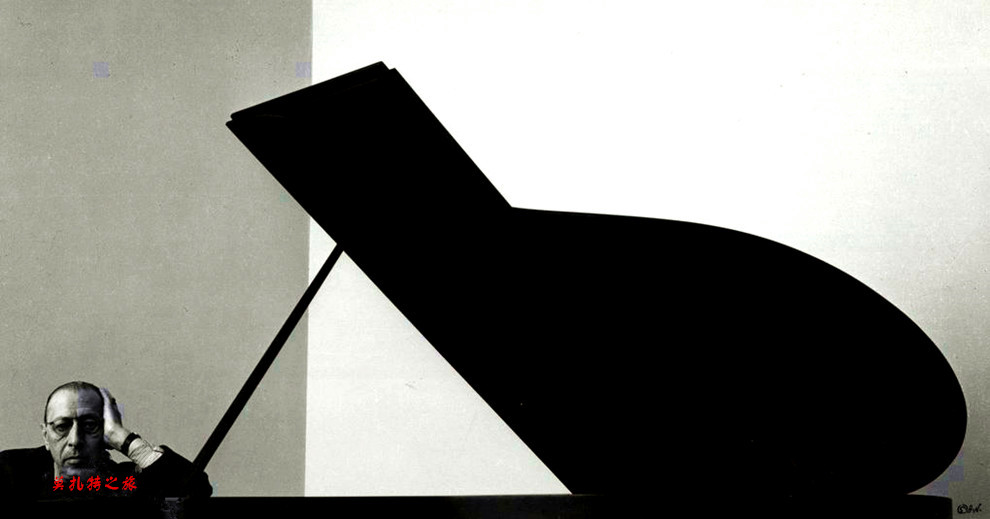 |
|
| |
伊戈尔·斯特拉文斯基(Igor Stravinsky) |
|
|
|
| |
斯特拉文斯基由于政治上的原因,他长期脱离祖国,生活在国外。这使得他生活经历复杂,创作作品众多,风格多变。从主要代表作为早期三部舞剧音乐《火鸟》《彼得鲁什卡》《春之祭》。其他重要作品还有舞剧《婚礼》《普尔钦奈拉》《阿波罗》《竞赛》,歌剧《俄狄普斯王》《浪子的历程》《普西芬尼》《诗篇交响曲》《三乐章交响曲》钢琴曲《俄罗斯圣歌》《我儿童时期的回忆》 |
|
|
|
| |
For political reasons, stravinsky left his country
for a long time and lived abroad.This made his life complicated,
his works numerous and his style varied.From the main
representative as the early three dance music "firebird",
"petrushka", "the rite of spring".Other important works include
the dance drama "wedding", "pulchenella", "Apollo" and
"competition", the opera "Oedipus the king", "the course of the
prodigal son", "Persephone", "symphony of psalms", "symphony of
three movements", piano music "Russian hymn", "my childhood
memories", etc. |
|
|
|
| |
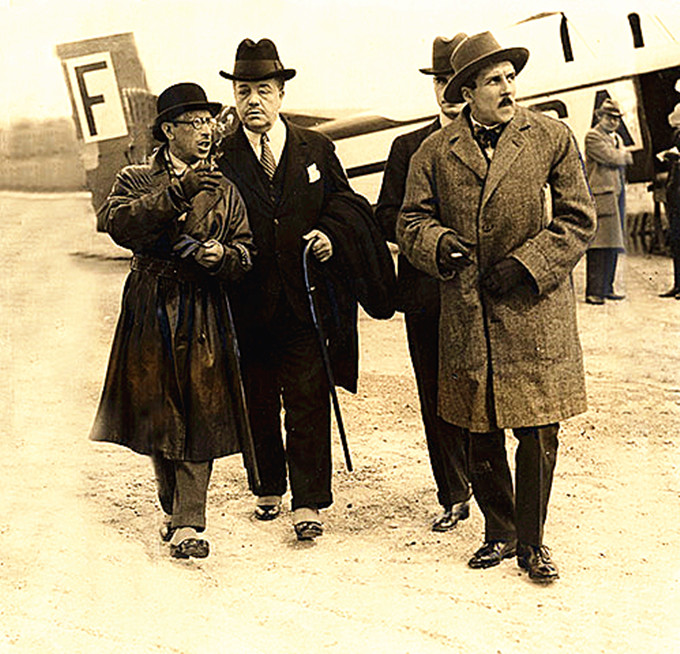 |
|
| |
伊戈尔·斯特拉文斯基(Igor
Stravinsky)和谢尔盖·迪亚吉列夫(带着拐杖)在20世纪20年代初。 |
|
|
|
| |
Igor Stravinsky and sergei diaghilev (with crutches)
in the early 1920s. |
|
|
|
| |
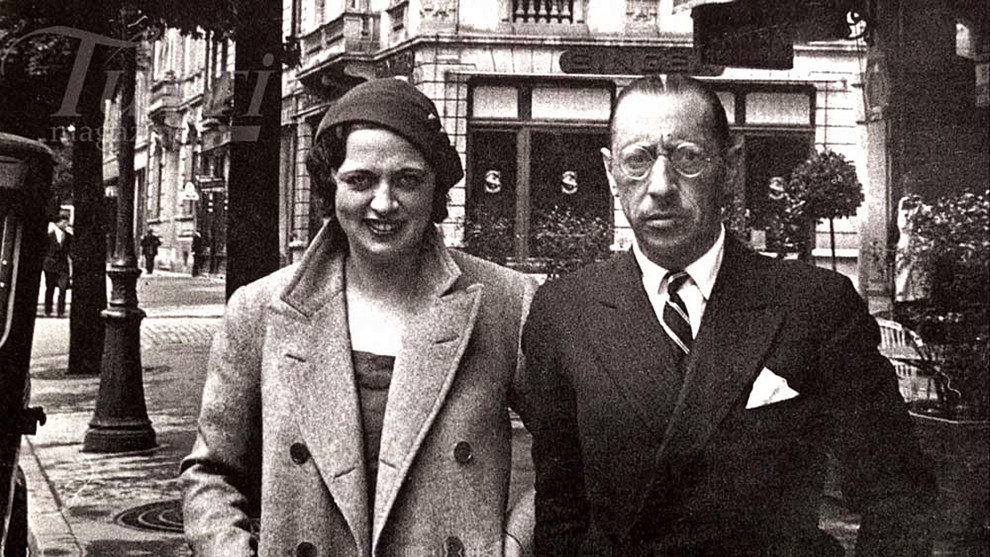 |
|
| |
伊戈尔·斯特拉文斯基和他的第二任夫人维拉·德·博塞特。 |
|
|
|
| |
Igor
Stravinsky et sa seconde épouse, Véra de Bosset. |
|
|
|
| |
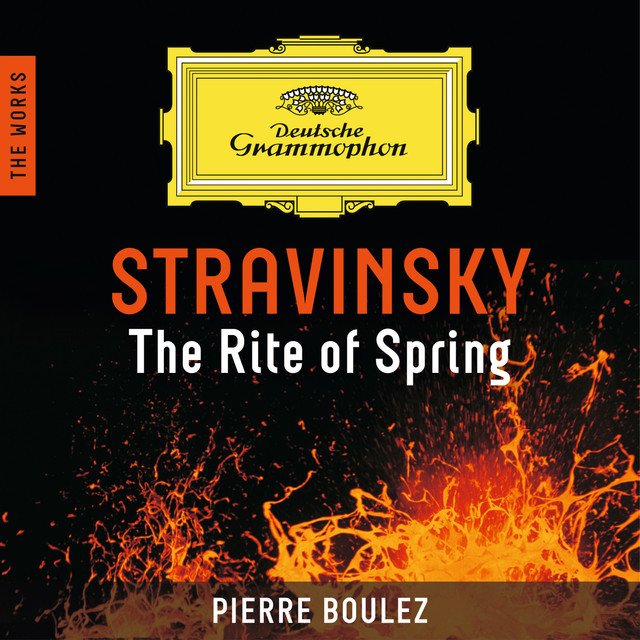 |
|
|
|
| |
伊戈尔·斯特拉文斯基舞剧《春之祭》唱片封面设计 |
|
|
|
| |
Album
cover design for igor stravinsky's dance drama the rite of
spring. |
|
|
|
| |
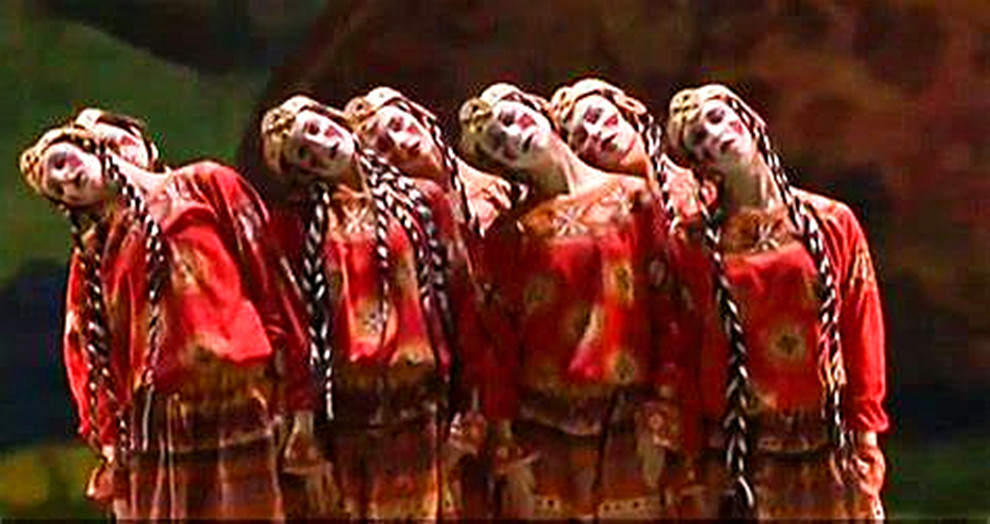 |
|
| |
伊戈尔·斯特拉文斯基舞剧《春之祭》剧照 |
|
|
|
| |
A still
from igor stravinsky's dance drama the rite of spring |
|
|
|
| |
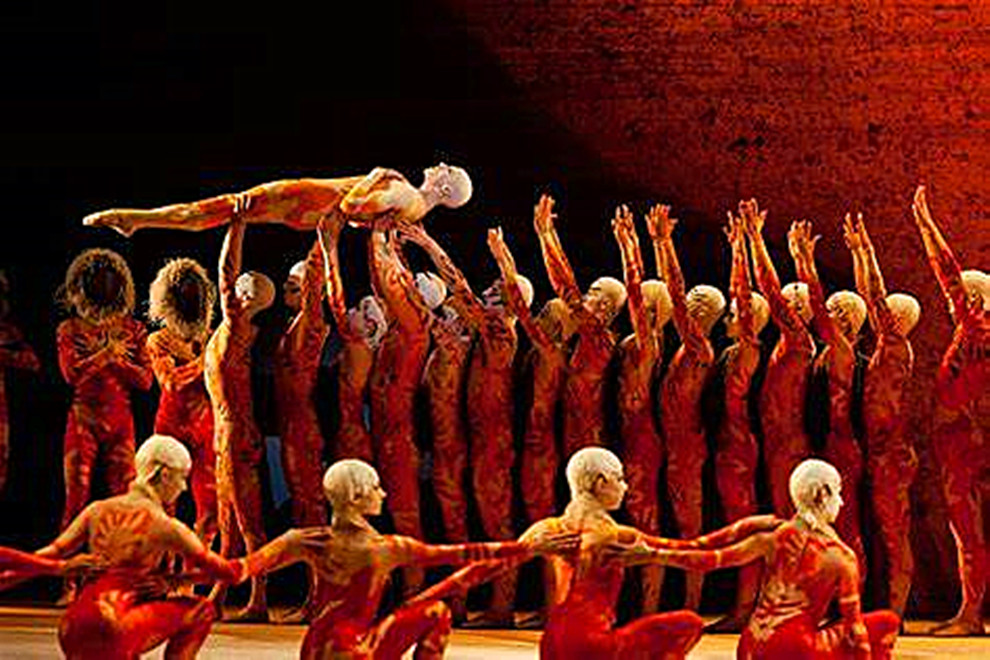 |
|
| |
伊戈尔·斯特拉文斯基舞剧《春之祭》剧照 |
|
|
|
| |
A still
from igor stravinsky's dance drama the rite of spring |
|
|
|
| |
舞剧《春之祭》
斯特拉文斯基最早起意写《春之祭》是在1910年,1913年3月29日写完总谱,题辞献给罗厄里希。《春之祭》中最有特征性的主题都是用小旋律构成的,难得超出四五个音符的范围。伴奏全部由短小重复的想起古老的民间音乐的停滞的和声,如风笛
的嗡鸣。舞剧分成两半,前半部分叫做《大地崇拜》。这里只作前半部介绍。
1.大地崇拜
①引子。立陶宛民间曲调的忧郁的短句是全曲中惟一借用的旋律,定下音乐的格调,旨在唤起春天里生物世界的奥秘感。
②春之先兆。青春少年之舞
重重的蹬足似的节奏,强烈的弱拍重音在一个不变的打击乐和声的背景上开始这一段。这一个野性的不协和音,斯特拉文斯基喜欢称它为十三和弦,有些人听来觉得它是E大调三和弦上的七和弦的双调性结合。
这种停滞的和声是原始音乐的习见的技巧,固定反复音型的手法也是原始音乐的常用技巧。这样的固定音型不止一个,在全剧中分别使用,或与其他固定音型或停滞和声结合使用,或用做旋律的伴奏。
③诱拐的游戏。这是一段令人气都喘不过来的狂热的音乐,用整个乐队演奏的尖锐的和弦没有固定间隔地加以强调。
④春之轮舞。大多数原始音乐的又一特征是旋律幅度狭小,往往最多4个音,有时甚至更少。下面的旋律在不协和的平行和弦的进行中响出,衬在一个沉重而拖拉的固定音型的背景上。
(二)祀献
引子多青年入神秘的圈子;奉献的礼拜;祖先的召唤;祖先们的仪式;祀奉舞——奉献。
太阳升起在山顶,青年们在神秘,象征的圈子中起舞,青年小伙子逐渐退后,少女们单独舞蹈,还不知道谁作为奉献。三支圆号奏缓慢的曲调,突然速度增快,奏和弦;定音鼓与弦乐——可怕的召唤,速度变为活跃的(Vivo).少女赞颂舞,剧烈不正规的节拍和跳音爆发,暗示原始的激情。当长老们再次祝福,冲突的节奏联合。大管、铜管加上鼓有力地奏和弦,后来音乐和缓下去,放慢。英国号,低音长笛与黑管交替,伴奏长老们的礼仪动作,音乐又逐渐形成高潮。少女们的舞蹈更为放纵。突然喧嚣停止,只有一个节奏留下:一个少女被选定作为奉献,其他少女退下。她独舞,开始慢,似乎在恍惚之中,逐渐加快,终于陷入宗教狂热和身体的谵妄之中。这时音乐已失去旋律和轮廓,降为节奏最原始的因素,乐队发狂式的切分节奏,伴奏着少女继续跳舞,突然地停止,她摇晃而倒地,几乎衰竭至死。这是真正的死之舞——选中的少女完成了她的奉献;春之祭结束。 |
|
|
|
| |
Dance
drama "rite of spring"
Stravinsky first wrote the rite of spring in 1910, and on March
29, 1913, he finished the score and dedicated it to roerich.The
most characteristic themes in the rite of spring are composed of
small melodies, rarely exceeding the range of four or five
notes.The accompaniment consists entirely of short repetitions
reminiscent of the stagnant harmonies of ancient folk music,
such as bagpipes
Hum.The dance drama is divided into two parts, the first half of
which is called earth worship.Here is only the first half.
1.The earth worship
(1) the introduction.The melancholy short sentences of
Lithuanian folk tunes are the only borrowed melodies in the
entire song, setting the tone of the music to evoke the mystery
of the biological world in spring.
The harbinger of spring.The dance of youth and youth begins with
a heavy stamping rhythm, with a strong underbeat accent on a
constant percussion and harmonic background.This wild
dissonance, which stravinsky liked to call the thirteenth chord,
sounded to some like a two-tone combination of the seventh chord
in the E major triad.
This kind of stagnant harmony is the traditional technique of
primitive music, and the technique of fixing the repeated
pattern is also the common technique of primitive music.More
than one such fixed pattern is used throughout the play, either
in combination with other fixed patterns or stagnant harmonies,
or as an accompaniment to a melody.
The game of abduction.It was a breathless, frenzied piece of
music, punctuated by the sharp chords of the whole orchestra at
random intervals.
Spring dance.Another feature of most original music is the
narrowness of the melody range, often up to four notes or
less.The following melody is played in a dissonant progression
of parallel chords against the background of a heavy, dragging,
fixed pattern.
2. Offerings of sacrifice
Introduce many young people into mysterious circles;Dedicated
worship;The call of the ancestors;Ancestral rituals;Worship
dance - dedication.
The sun rises on the top of the mountain, the young men dance in
mysterious, symbolic circles, the young men fade away, the young
girls dance alone, not knowing who to offer.Three horns playing
a slow tune, suddenly speed up, playing a chord;Timpani and
strings -- a terrible call, speed becomes active (Vivo).Maidens
praise the dance, with its violent irregular beats and rhythmic
bursts, suggesting primitive passion.As the elders bless again,
the rhythm of conflict unites.The brass and brass pipes and
drums played the chords vigorously, and then the music slowed
down.British horn, bass flute and clarinet alternately,
accompanied by the elders of the ceremonial movement, music and
gradually formed a climax.Girls dance more freely.Suddenly the
din stopped, and only one beat remained: one maiden was chosen
for the service, the others for the retreat.She dances solo,
slowly at first, as if in a trance, gradually gathering speed,
and finally falling into religious and physical delirium.By this
time the music had lost its melody and outline, and was reduced
to the most primitive element of rhythm. The band's frantic
syncopation, accompanied by the girl's continuing dance, stopped
abruptly, and she fell to the ground, almost exhausted to
death.This is the true dance of death -- the chosen maiden
completes her dedication;The rite of spring is over. |
|
|
|
| |
|
|
|
|
| |
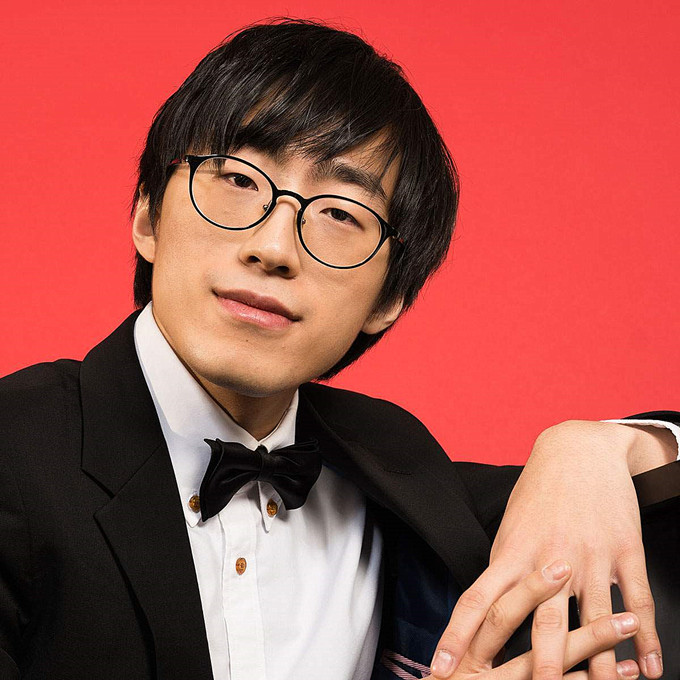 |
|
|
|
| |
金道贤(Do-Hyun Kim) |
|
|
|
| |
金道贤(Do-Hyun Kim)
22岁时毕业于克利夫兰音乐学院(Cleveland Institute of
Music),是一名钢琴家,在谢尔盖·巴巴扬(Sergei
Babayan)的指导下获得了学士学位。2013年,他从首尔国立大学(Seoul National
University)转学,以寻求更深入的梦想职业。
以前的老师包括白海森,郑恩Byun和Hee-Sung
Joo。他在六岁时开始学习钢琴,后来在十四岁时决定从事音乐事业。他在首尔艺术高中学习了三年,在那里他得以发展自己的音乐背景和学术成就。他在韩国获得过无数奖项,包括韩国肖邦钢琴大赛、萨米克钢琴大赛、库克敏日报钢琴大赛等。2014年春天,他与克利夫兰音乐学院管弦乐队合作演出,获得2013年秋天克利夫兰音乐学院协奏曲比赛的奖项。在克利夫兰音乐学院学习期间,他被提名在不同的舞台上表演,如特色大师班,伟大的匈牙利作曲家音乐会,并在几个场合,在钢琴。他是2014年密歇根州卡拉马祖(Kalamazoo)吉尔摩键盘节(Gilmore
Keyboard Festival)的一名成员,在那里他被提名在大师班表演。2014年,他还在汉普顿的the piano
ofest举办了多场音乐会。
2017年秋季,在谢尔盖·巴巴扬(Sergei Babayan)的指导下,他开始在茱莉亚音乐学院(Juilliard
School)攻读硕士学位。 |
|
|
|
| |
Emmanuel Aged twenty-two, Do-Hyun Kim graduated
as a pianist from the Cleveland Institute of Music, where he
gained his bachelor’s degree under the tutelage of Sergei
Babayan. In 2013, he transferred from the Seoul National
University in order to seek greater depth in his dream
profession.
Previous teachers include HaeSun Paik, Jeong-Eun Byun and
Hee-Sung Joo. He started studying the piano at the age of six,
and later decided to pursue a career in music at the age of
fourteen. He attended the Seoul Arts High School for three
years, where he was able to develop his musical background along
with academic excellence. He has won numerous awards in Korea,
including the Korean National Chopin Piano Competition, the
Samick Piano Competition and the Kukmin Daily Piano Competition
among others. In the spring of 2014, he performed with the
Cleveland Institute of Music's Orchestra as a prize-winner of
the Cleveland Institue of Music's Concerto Competition in the
autumn of 2013. During his student years at the Cleveland
Institute of Music, he was nominated to perform at various
platforms, such as featured master-classes, the Great Hungarian
Composer Concert and, on several occasions, at the Pianofest. He
was a fellow of the 2014 Gilmore Keyboard Festival in Kalamazoo
(Michigan), where he was nominated to perform in a master-class.
He also performed numerous concerts at the Pianofest in the
Hamptons in 2014.
In autumn 2017 he began his new music course for a Master’s
Degree at the Juilliard School under the instruction of Sergei
Babayan. |
|
|
|
| |
|
|
|
|
| |
【第十六届柴可夫斯基比赛】
金道贤(Do-Hyun Kim)演奏 斯特拉文斯基 彼得鲁什卡 第三乐章
|
|
|
|
| |
|
|
|
|
| |
 |
|
| |
安德烈·科萨科夫(Andrei
Korsakov 1946-1991) |
|
|
|
| |
安德烈·科萨科夫(1946-1991年)在维克托·特列蒂亚科夫之后被任命为莫斯科室内管弦乐队的指挥和艺术总监,但在1991年早年去世前只担任了一段短时间的职位,他被康斯坦丁·奥连接替。
科萨科夫是苏联和国外备受赞誉的小提琴家和指挥家,他被苏联政府命名为人民艺术家。
他演奏了一把来自俄罗斯国家收藏的安德里亚·瓜纳里小提琴,后来又演奏了一把文森佐·罗吉耶里小提琴。 |
|
|
|
| |
Andrei
Korsakov (1946-1991) was appointed conductor and artistic
director of the Moscow Chamber Orchestra after Victor Tretiakov,
but only held the position for a short period of time before his
early death in 1991. He was succeeded by Constantin Orberlian.
Korsakov was a highly acclaimed violinists and conductor both in
the USSR and abroad, and he was named the People’s Artist by the
Soviet government. He played an Andrea Guarneri violin from the
Russian State Collection, and later a Vincenzo Rogieri. |
|
|
|
| |
|
|
|
|
| |
安德烈·柯萨科夫演奏斯特拉文斯基小提琴协奏曲 |
|
|
|
| |
Andrei Korsakov plays Stravinsky
Violin Concerto
|
|
|
|
| |
|
|
|
|
| |
未得原作者编者授权严禁转载www.mt77.com任何内容 |
|
|
|
|
|
|
|
|
|
|
|
|
|
|


